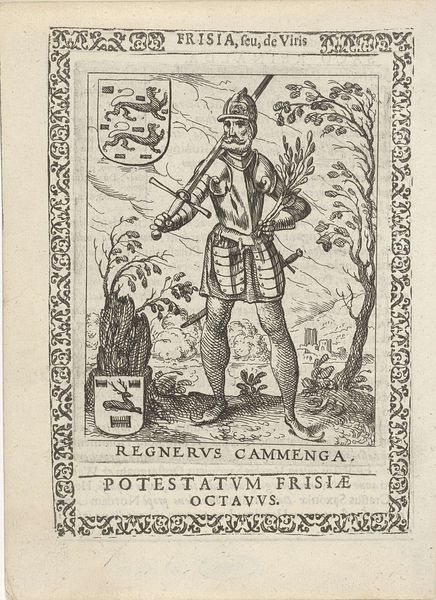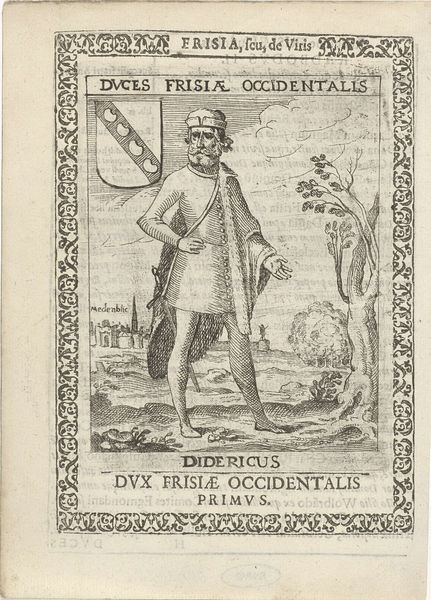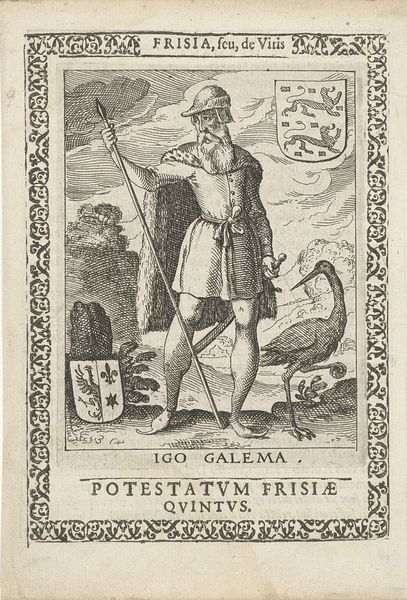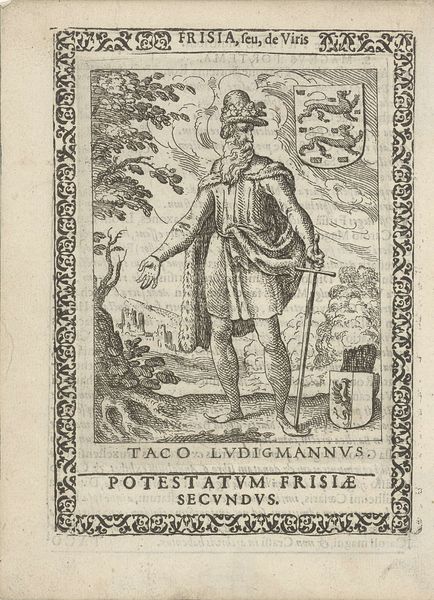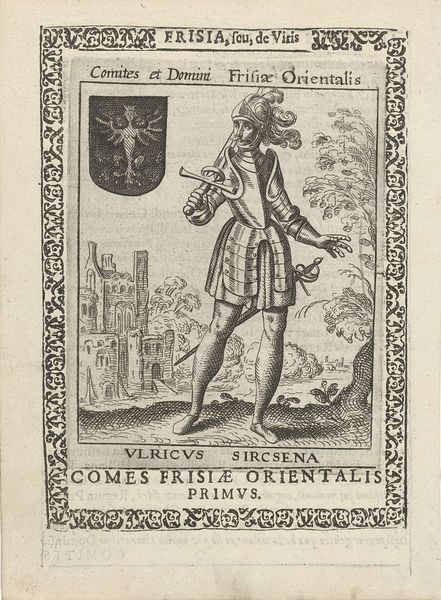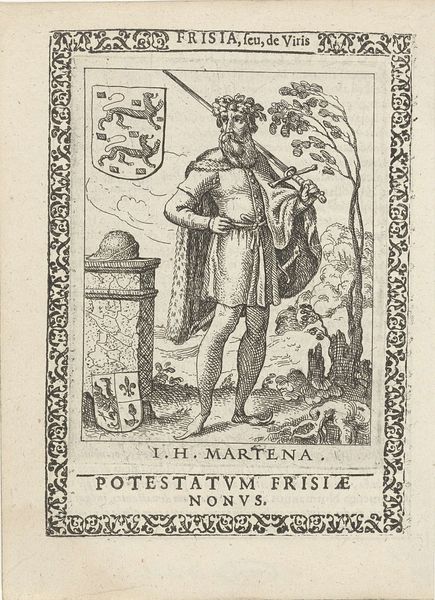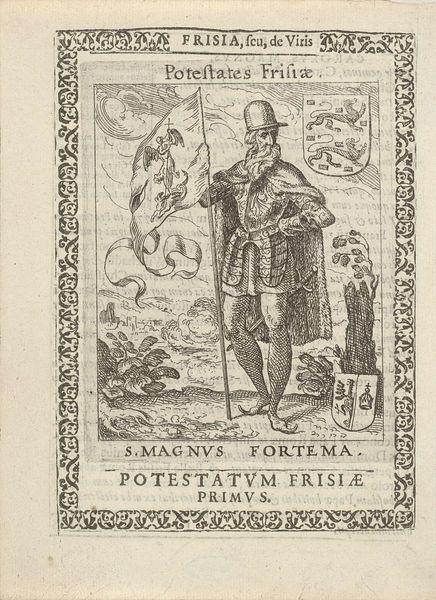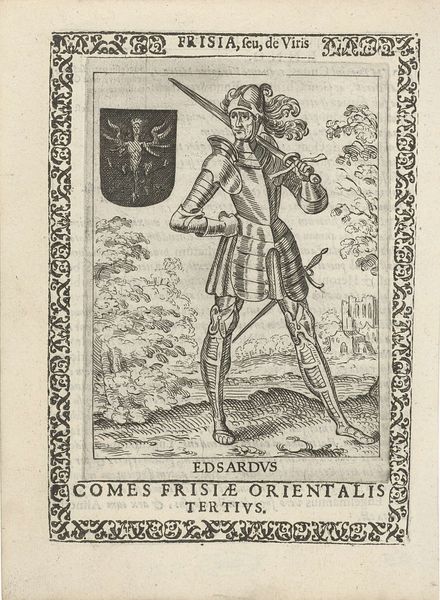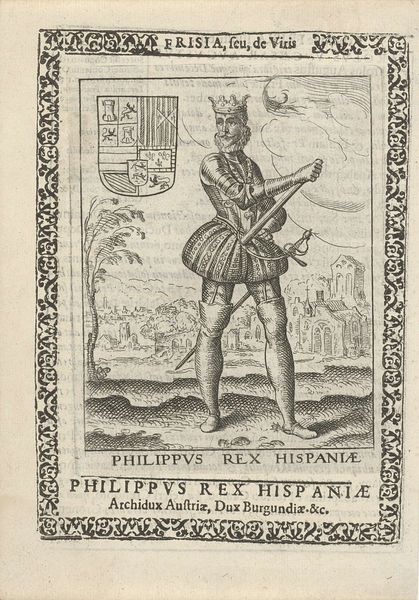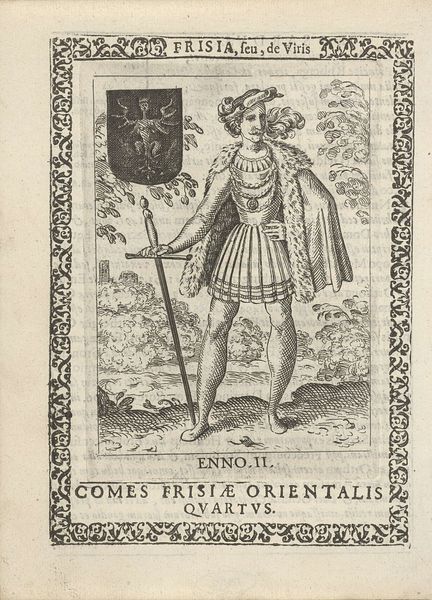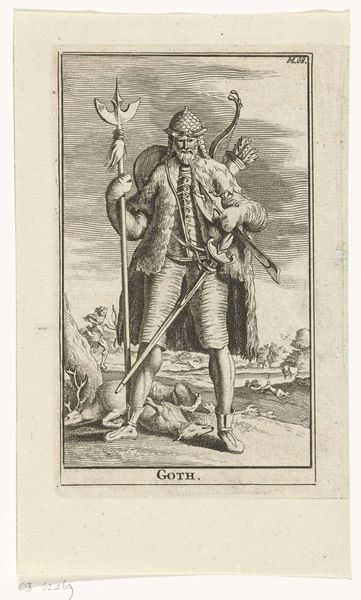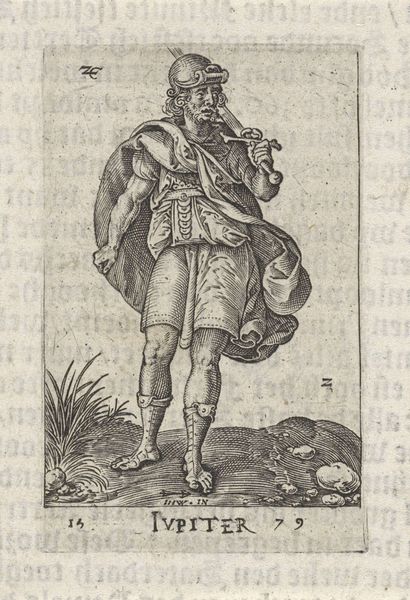
Adelbricus van Adelen, derde potestaat van Friesland 1618 - 1620
0:00
0:00
print, woodcut, engraving
#
portrait
# print
#
figuration
#
woodcut
#
history-painting
#
northern-renaissance
#
engraving
Dimensions: height 125 mm, width 100 mm, height 158 mm, width 115 mm
Copyright: Rijks Museum: Open Domain
Curator: This is a fascinating engraving dating from 1618 to 1620, titled "Adelbricus van Adelen, derde potestaat van Friesland" by Pieter Feddes van Harlingen, held at the Rijksmuseum. Editor: It’s striking. There's a figure of authority rendered with impressive detail, a really imposing presence. He has this commanding stance that gives him a lot of visual weight in the piece. Curator: Yes, Feddes clearly wanted to imbue Adelbricus with that authority, depicting him with his sword, shield, and armour, prominently displaying symbols of Frisian power. The fact that this image was made using a woodcut and engraving suggests it was probably aimed for broader dissemination. It speaks to the developing print culture of the time. Editor: Printmaking democratized image ownership and circulation, making art more available. I wonder how such an image contributed to shaping collective memory about Friesland’s leadership and its history during a tumultuous period of conflict in the region? Curator: The very act of creating and circulating such a print demonstrates the growing importance of visually representing power and authority, especially when so much statecraft played out on broader, printed media such as pamphlets or public notices. Looking at the fine details etched into the metal and wood, it seems there was real investment to translate the subject onto reproducible medium. Editor: Indeed, you can see how the various techniques of the time period create a texture which almost imbues the artwork with character. We could learn more about what kind of paper was used, and explore the economic circumstances of that paper production too, as it contributes to understanding how people would access, perceive, and engage with the image. It is through materiality that one can trace labour, access, and thus a more comprehensive cultural relevance. Curator: Considering all these contextual layers, you see that it’s more than just a portrait of a man but a manufactured emblem created and disseminated during an era that would pre-date digital representations of leadership and its power. Editor: Exactly. These images shaped political opinion and legitimized power structures within a given social and historical period. This print, when understood in its proper context, invites deeper questions.
Comments
No comments
Be the first to comment and join the conversation on the ultimate creative platform.
